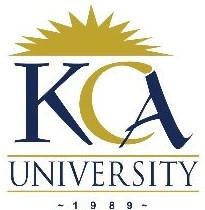 UNIVERSITY EXAMINATIONS: 2012/2013
UNIVERSITY EXAMINATIONS: 2012/2013
EXAMINATION FOR THE BACHELOR OF SCIENCE IN
INFORMATION TECHNOLOGY/ BACHELOR OF COMMERCE
BIT 1111 KCAU 001 INFORMATION LITERACY (EVENING)
DATE: AUGUST, 2013 TIME: 1 HOURS
INSTRUCTIONS: Answer Question ONE and Any Other TWO Questions
QUESTION ONE
a) Distinguish direct quotation and paraphrasing in referencing. (2 Marks)
b) Describe Four situations when referencing is required. (2 Marks)
Journal article extract from page 423:
Knowledge management:Understanding theory and developing strategy
By Kristen Bell and Lisa Ann Jackson
1. Introduction
Knowledge management has become the latest strategy in increasing organizational
competitiveness. Knowledge and experience in an organization initially belong not to the
organization itself, but to the individuals it employs. This fact, relates to the very nature
of knowledge, makes organizations dependent on both the good will and capabilities of
employees in applying that knowledge for the organization’s sake, and sharing it as
needed by the organization. While some authors have discussed the transformation of
individual into organizational knowledge, many sources remain pessimistic about the
extent to which knowledge can be detached from an individual. So the question of what
managers can do (if anything) to transform their employees’ knowledge into
organizational knowledge, or at least to share it as much as possible among….
The following are the other journal bibliographic details:
VOL. 17 NO. 8 2010, pp. 423-437, Emerald Group Publishing Limited, ISSN 1367-3270
/ JOURNAL OF KNOWLEDGE MANAGEMENT / PAGE 423
DOI 10.1108/13673271211246112
c) You have been provided with the above journal article extract and you are required to
do the following:
(i) Formulate a direct quotation citation using the APA referencing style
(2 Marks)
(ii) Formulate a paraphrased citation using the APA referencing style.
(2 Marks)
(iii) Compile the references according to the APA referencing style.
(7 Marks)
QUESTION TWO
a) With the aid of appropriate examples, distinguish between scholarly and nonscholarly sources of information ( 2 Marks)
b) Explain four reasons why selecting sources of information provided by libraries could
be more appropriate when faced with an academic information task. (8 marks)
QUESTION THREE
a) Learning how to learn has been argued as the most critical skill one can learn in the
university.
Discuss the above statement. (5 Marks)
b) Analyze five characteristics of an information literate individual. (5 marks)
QUESTION FOUR
a) Outline any four considerations when compiling references at the end of your work
when using the American Psychological Association (APA) referencing style.
(4 Marks).
b) Describe the steps involved in accessing the electronic resources provided by KCA
University library. (6 Marks)
QUESTION FIVE
a) Explain Four measures that could be taken by practicing scholars and academicians to
minimise their liability to plagiarism. (4 Marks)
b) With the aid of appropriate examples, distinguish between primary and secondary
sources of information. (2 Marks)
c) Outline any four information literacy skills. (4 marks)